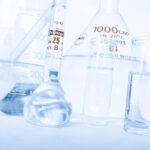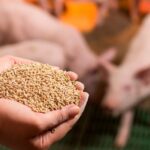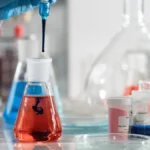
You may ask if apple juice concentrate has fumaric acid. Fumaric acid can be found in apple juice. It happens when apples rot or ferment. Sometimes, food makers add fumaric acid when making juice. They do this to change the sourness or help it last longer. Apple juice concentrate can have fumaric acid for many reasons.
Fumaric acid keeps juice tasting good and fresh.
Sources of Fumaric Acid in Apple Juice

Natural Fumaric Acid in Apple Juice Concentrate
You might ask how fumaric acid gets into apple juice before it is made. The answer is often spoilage. When apples start to rot, some tiny living things grow. These microorganisms change the fruit’s chemistry. Rhizopus stolonifer and Lactobacillus plantarum are two main ones. They break down the apple’s acids and make new ones like fumaric acid. Studies show that spoiled apples have more fumaric acid than fresh ones. For example, after five days, Rhizopus stolonifer can make the level go over 18 mg/l. Lactobacillus plantarum can raise it to about 5 mg/l. This means most fumaric acid in juice concentrate comes from apples that started to rot before being made into juice.
Note: The first patulin and fumaric acid levels in apples can show if spoilage happened. If you see higher amounts, it often means the apples were already spoiled before juicing.
Here is a table that shows how different microorganisms change fumaric acid in apple juice:
| Microorganism | Role in Fumaric Acid Formation | Additional Notes |
|---|---|---|
| Rhizopus stolonifer | Main cause for making fumaric acid and lactic acid | Big reason during apple storage and decay |
| Lactobacillus plantarum | Makes some fumaric acid through malolactic fermentation | Greatly lowers L-malic acid; raises lactic acid in some conditions |
| Penicillium expansum | No effect on fumaric acid | Makes patulin but does not change fumaric acid levels |
You can see that Rhizopus stolonifer is the biggest source of fumaric acid in apple juice. Lactobacillus plantarum also adds some. Penicillium expansum does not change fumaric acid but makes other spoilage compounds.
Processing Effects on Fumaric Acid Levels
When apples are turned into juice, the steps can change how much fumaric acid is there. Most steps, like filtering and clarifying, do not take out much fumaric acid. Pasteurization uses heat to kill germs but does not lower fumaric acid. Heat and evaporation can even make a little more fumaric acid. This is because heat changes some malic acid into fumaric acid. But this increase is small. Fresh clarified apple juice has between 0 and 1.7 mg/l of fumaric acid. After heating, it might go up to just under 3 mg/l. Only evaporation makes a bigger jump, but the amount stays low unless the apples were spoiled before.
If you find more fumaric acid in apple juice, it often means spoilage happened. Scientists use this as a sign of microbial spoilage. The AIJN guideline says apple juice should not have more than 5 mg/kg of fumaric acid. This helps you know if the juice is safe and made from good apples. Most apple juice concentrates have about 4-6 mg/l of fumaric acid. This matches what you would expect from apples with some spoilage.
- Main sources of fumaric acid in apple juice concentrate:
- Microbial contamination by Rhizopus stolonifer and Lactobacillus plantarum
- Small increase from heat and evaporation
- Higher levels often mean spoilage or bad storage
If you want to check apple juice quality, look at the fumaric acid. High levels usually mean spoilage happened before or during making the juice. This makes fumaric acid a good sign of spoilage in apple juice concentrate.
Uses of Fumaric Acid in Apple Juice Concentrate

Fumaric Acid as an Acidulant in Apple Juice Concentrate
Apple juice concentrate often tastes sour and fresh. Fumaric acid gives the juice this tart flavor. You do not need to add much fumaric acid to get a strong sour taste. It is about 1.5 times more acidic than citric acid. This means manufacturers use less of it than other acids. Using less helps the juice last longer, especially in powder form.
Here is a table that shows how different acidulants compare in apple juice concentrates:
| Acidulant | Relative Acidity | Usage in Foods | Sensory Impact |
|---|---|---|---|
| Fumaric Acid | 1.5x citric acid | Beverages, bakery, confectionery | Strong acid taste; weak anti-browning |
| Citric Acid | Baseline | Juices, wines, candies | Pleasant taste; moderate anti-browning |
| Malic Acid | Less than fumaric | Juices, candy | Enhances flavor; moderate anti-browning |
| Lactic Acid | Less than fumaric | Dairy, fermented foods | Variable sourness |
Fumaric acid does not stop browning in juice very well. Citric acid and malic acid work better for keeping juice looking fresh. Fumaric acid is mostly used to make juice taste more sour.
Tip: If you want juice that is very tart and lasts longer, pick one with fumaric acid.
Preservative Role of Fumaric Acid
Fumaric acid helps keep apple juice safe and fresh. It lowers the pH of the juice. When the pH is low, germs cannot grow well. Fumaric acid makes it hard for bacteria to live and multiply. It works against germs like E. coli and S. aureus.
Sometimes, manufacturers mix fumaric acid with other preservatives. This makes the juice even safer to drink. There are not many studies on apple juice concentrate, but research on other fruit products shows fumaric acid keeps juice free from bad germs.
You can feel sure that fumaric acid helps your juice stay safe and taste good for a longer time.
Safety of Fumaric Acid in Apple Juice Concentrate
Regulation and Legal Limits of Fumaric Acid
You might wonder if there are rules for fumaric acid in apple juice concentrate. Food safety groups make strict rules to keep you safe. The European Fruit Juice Association, called AIJN, says apple juice should not have more than 5 mg/kg of fumaric acid. This rule helps show the juice is made from good apples and is safe.
Groups like the FDA and EFSA also check food additives. They say fumaric acid is okay to use in foods and drinks. These groups look at science before they approve it. You can trust that apple juice concentrate with allowed amounts of fumaric acid is safe.
Note: If apple juice has much more than 5 mg/kg of fumaric acid, it could mean the apples were spoiled or the juice was not made well.
Here is a table that shows who makes the rules and what the limits are:
| Organization | Legal Limit for Fumaric Acid | Purpose |
|---|---|---|
| AIJN | 5 mg/kg | Quality and safety |
| FDA | Approved as food additive | Consumer protection |
| EFSA | Approved as food additive | Health safety |
Fumaric Acid Intake and Safety
You may ask if fumaric acid in apple juice concentrate is safe for you. Scientists say fumaric acid is not harmful at the amounts in juice. Your body can break it down easily. Most apple juice concentrates have very small amounts. Fresh clarified apple juice usually has between 0 and 1.7 mg/l. Processing steps like evaporation can make it go up a little, but good juice almost never goes over 3 mg/l.
Researchers found only spoiled apples or extra added fumaric acid make the level higher. If you drink apple juice concentrate from trusted brands, you get safe amounts of fumaric acid. Food safety experts check these levels often. They make sure you do not get too much.
You can feel sure when you drink apple juice concentrate. The amount of fumaric acid is low and safe. Scientists and food safety groups agree that normal amounts do not hurt you.
Tip: Always read the label and pick juice from brands that follow safety rules.
- Main points about fumaric acid safety:
- Approved by food safety groups
- Strict rules for legal limits
- Low amounts in most apple juice concentrates
- Safe for you to drink
You have learned that fumaric acid can be in apple juice concentrate. It can come from apples that went bad or from being added by food makers. Food makers add it to make the juice taste better and last longer. Safety groups make strong rules about how much can be used. This means you can trust most apple juice concentrate is safe.
- Fumaric acid is from spoiled apples or from making juice.
- It makes juice taste good and helps it stay fresh.
- The allowed amount keeps you safe.
Always look at the label for any additives. You can feel sure when you drink apple juice concentrate that follows safety rules.
FAQ
Is fumaric acid naturally found in apples?
Yes, apples have a little fumaric acid. When apples spoil, microorganisms make more fumaric acid. Fresh apples have less than spoiled apples.
Why do manufacturers add fumaric acid to apple juice concentrate?
Manufacturers use fumaric acid to make juice taste sour. It also helps the juice last longer. Fumaric acid works as an acidulant and keeps juice safe. This gives you juice that tastes fresh and is safer to drink.
Is fumaric acid safe for children to drink?
It is safe for kids to drink juice with fumaric acid. Food safety groups say it is okay in drinks. The amount in apple juice concentrate is low and safe for everyone.
How can I know if my apple juice concentrate contains fumaric acid?
Look at the label’s ingredient list.
If you see “fumaric acid” or “E297,” it was added. Most brands follow the rules and show all additives.




